Just how far can you upgrade a so-called budget bike? I put this £1,499* Bossnut through a time machine to find out.
*GoOutdoors Members’ price, RRP is £1,700
I’ve had the Bossnut for quite a long time now. I seem to recall it arriving sometime in August last year (before the official launch date in October). So it’s getting on for a whole year of Bossnutting about.
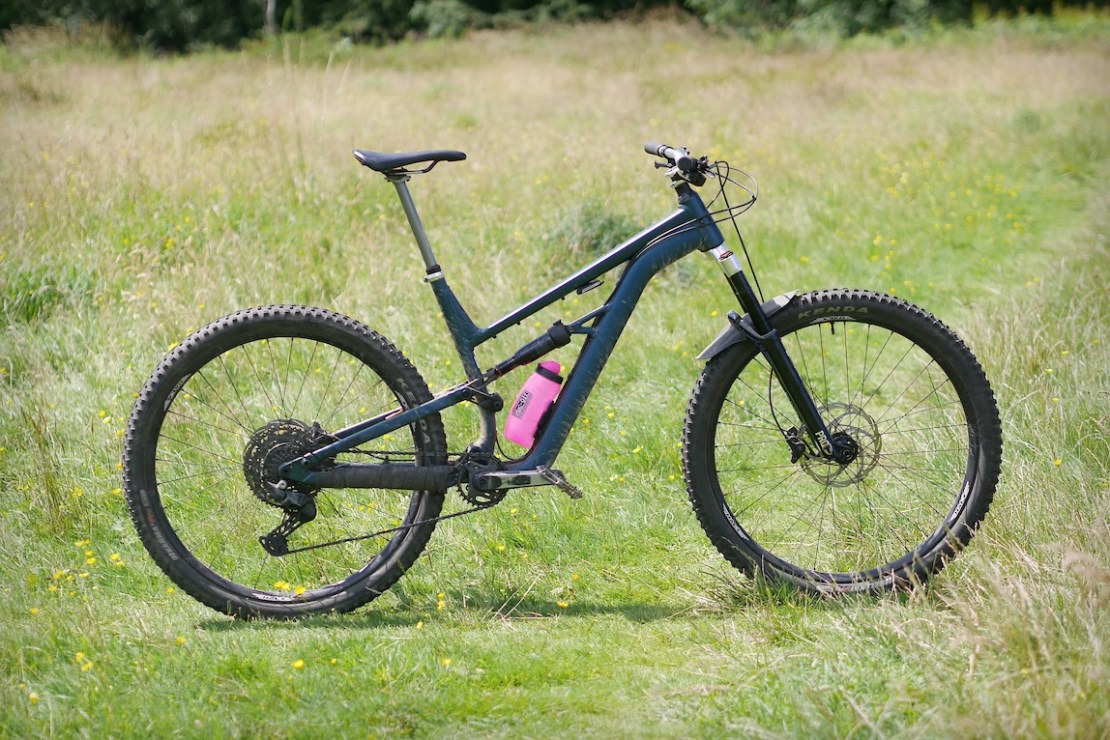
It’s only been the last six months or so that I’ve begun to upgrade certain bits. Partly because things need testing but partly to see how far you can go with an affordable MTB before you should probably cut your losses.
Latest Singletrack Merch
Buying and wearing our sustainable merch is another great way to support Singletrack
Turns out, you can go pretty darn far…
The frame
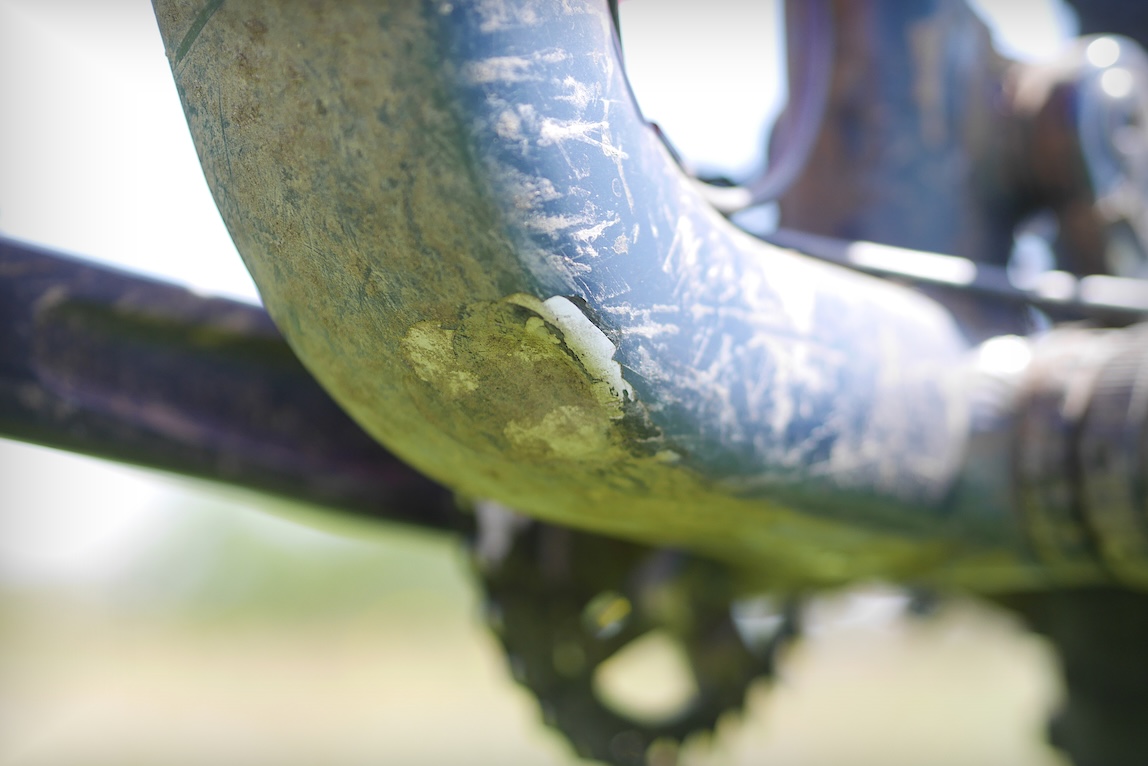
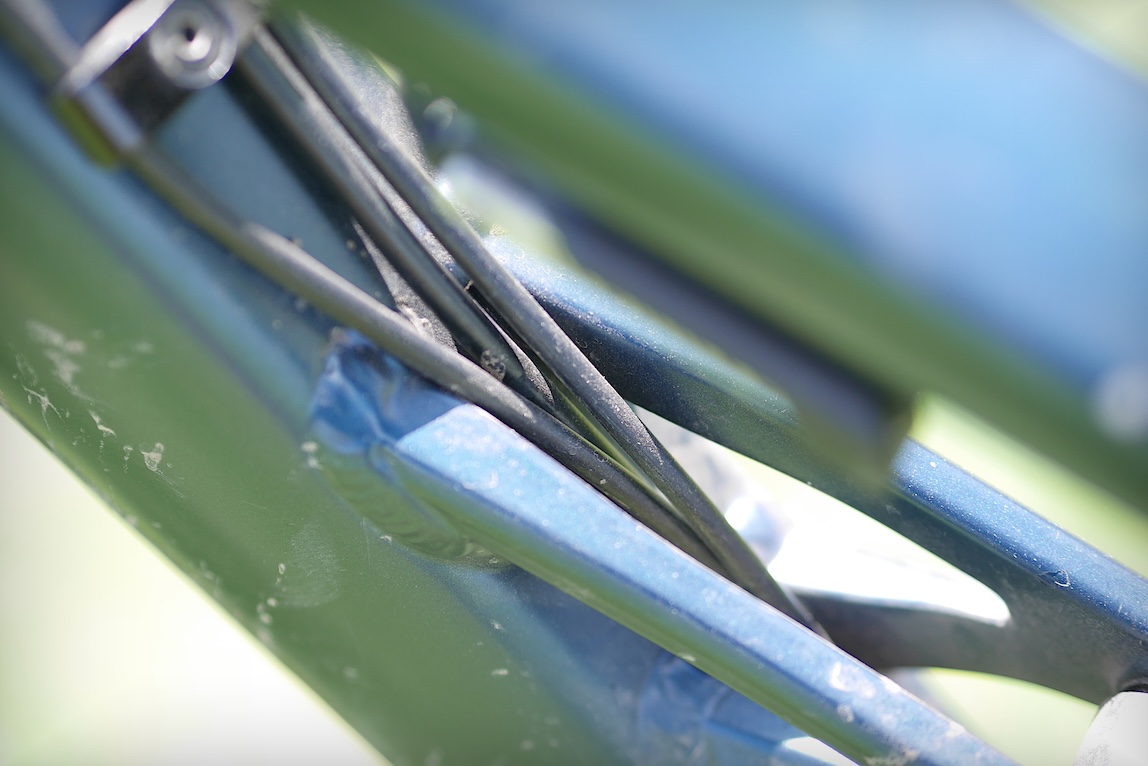
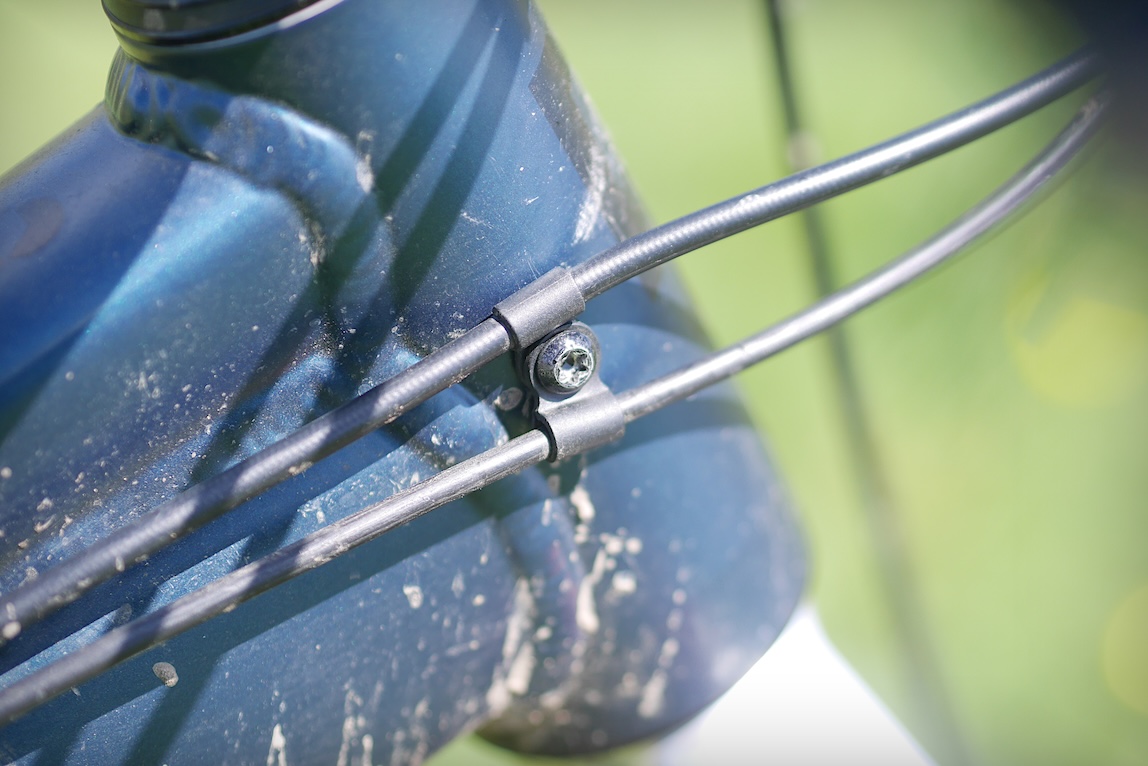
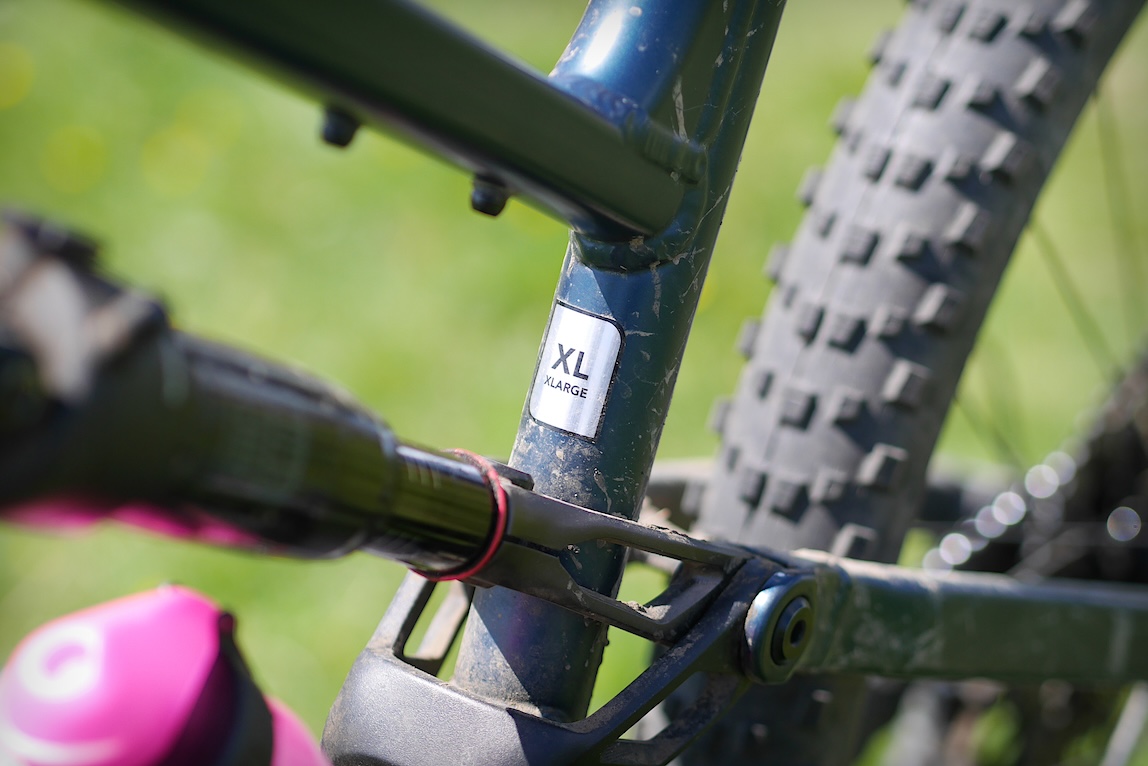
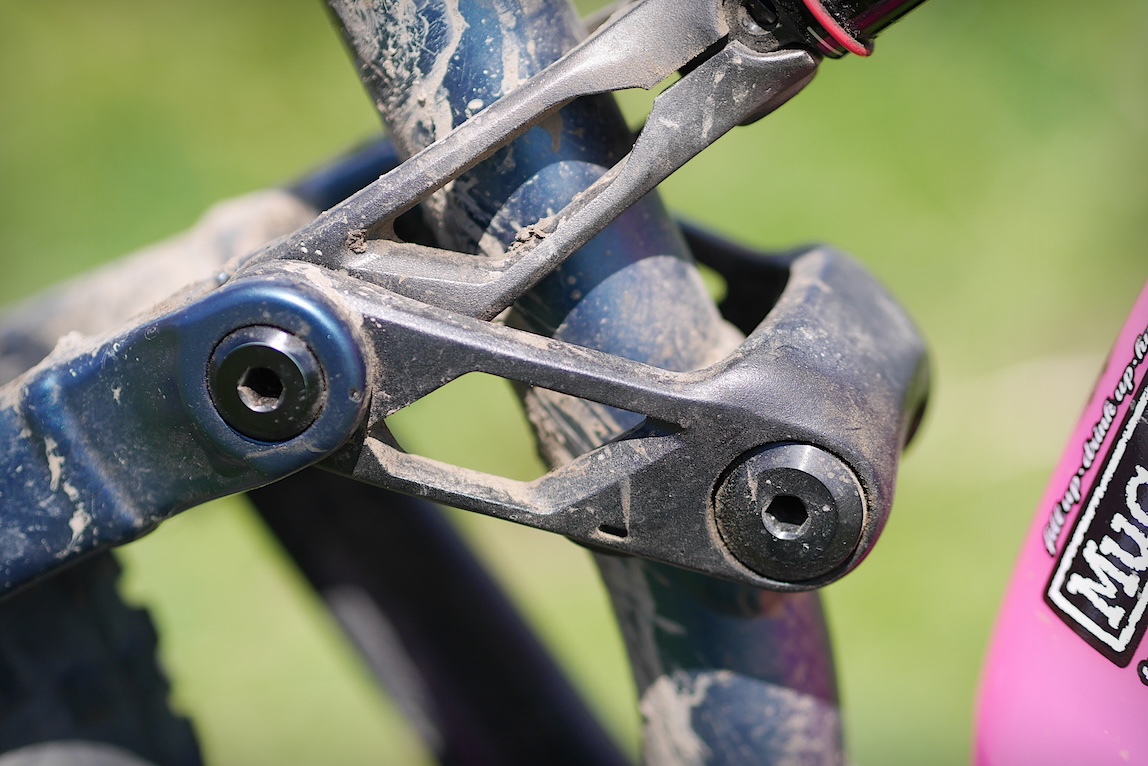
The bike has had something of a hard life but nothing over the top for a mountain bike that’s designed to be ridden on everything, every weekend. The paintwork is holding up fine. With the exception of the dented down tube (I sumped out on a rocky roll-in).
None of the pivots have required tightening yet. I appreciate the external cable routing (so much easier to work on) but I may put something like mastik tape around the cables where they pass through the forward shock mount, as I think they occasionally cause a clicking sound against each other on rough terrain. In general though the Bossnut is impressively quiet in terms of squeaks and such like.
On an aesthetic note, I think this is easily the nicest looking Bossnut from Calibre thus far. Partly due to the deep sea blue-green colour and partly due to the subtle-to-the-point-of-near-invisibilty of the decals (previous Bossnuts have been rather garish paint and decals).
The drivetrain
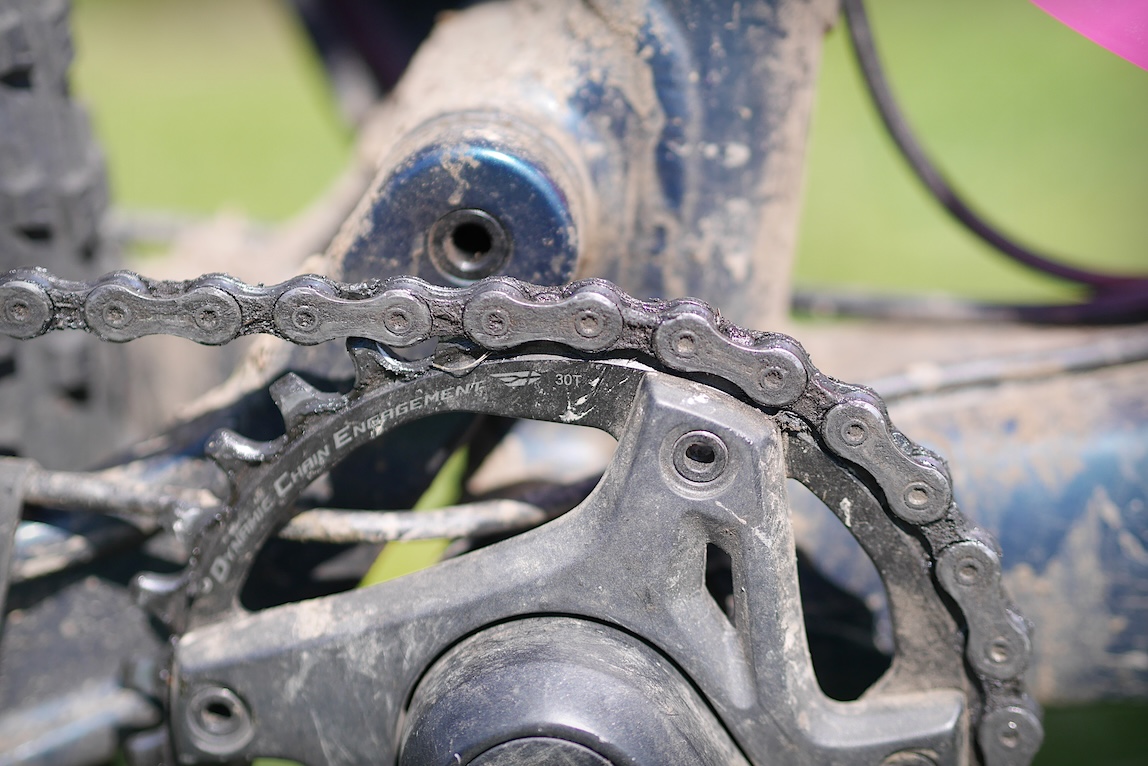
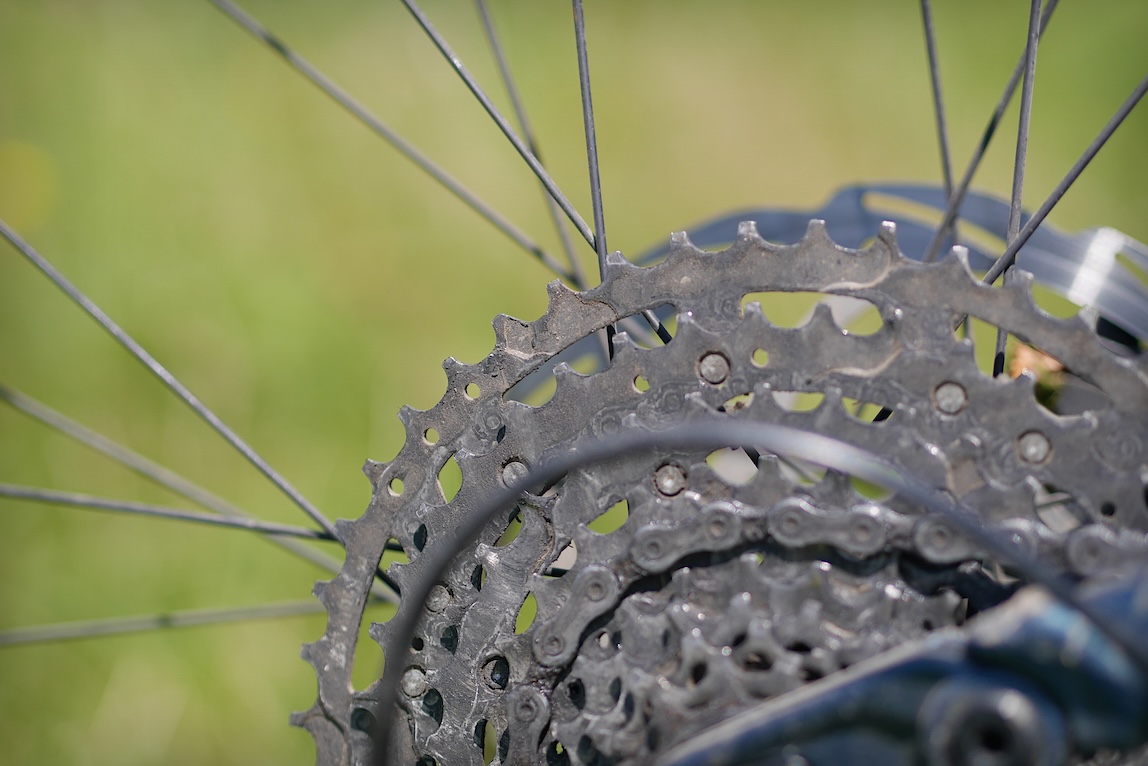
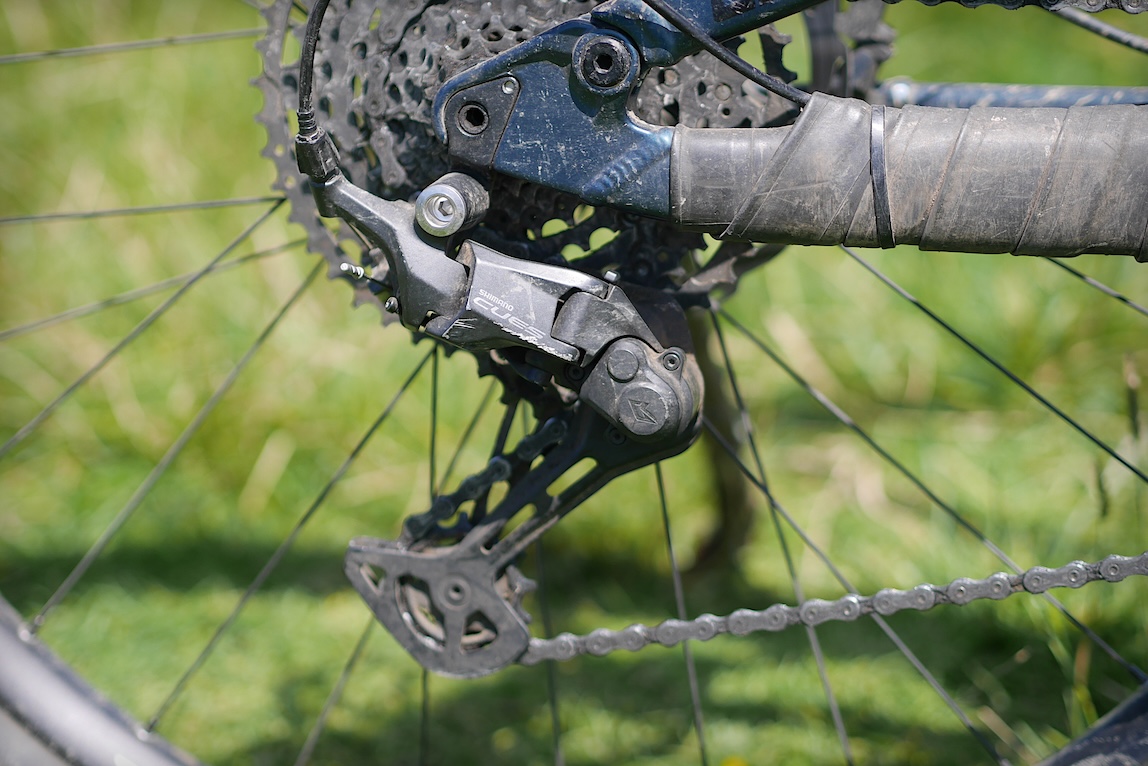
In terms of shifting, the Shimano CUES stuff has been fine. Sure, it’s a bit baggy feeling and requires more thumb throw (compared to higher end gruppos) but it’s totally fine.
I have switched to a smaller chainring (30T from 32T) but I do still find the easiest gear not easy enough. I also have found myself ‘in-between’ gears quite a bit ie. one gear is too spinny and the adjacent gear is a tad too big. That’s 10-speed for you. I can live with it. However, I may try to source a wider range 10-speed cassette than the 11-48T that’s on currently. But I will probably just leave it until something breaks or wears out.
The brakes
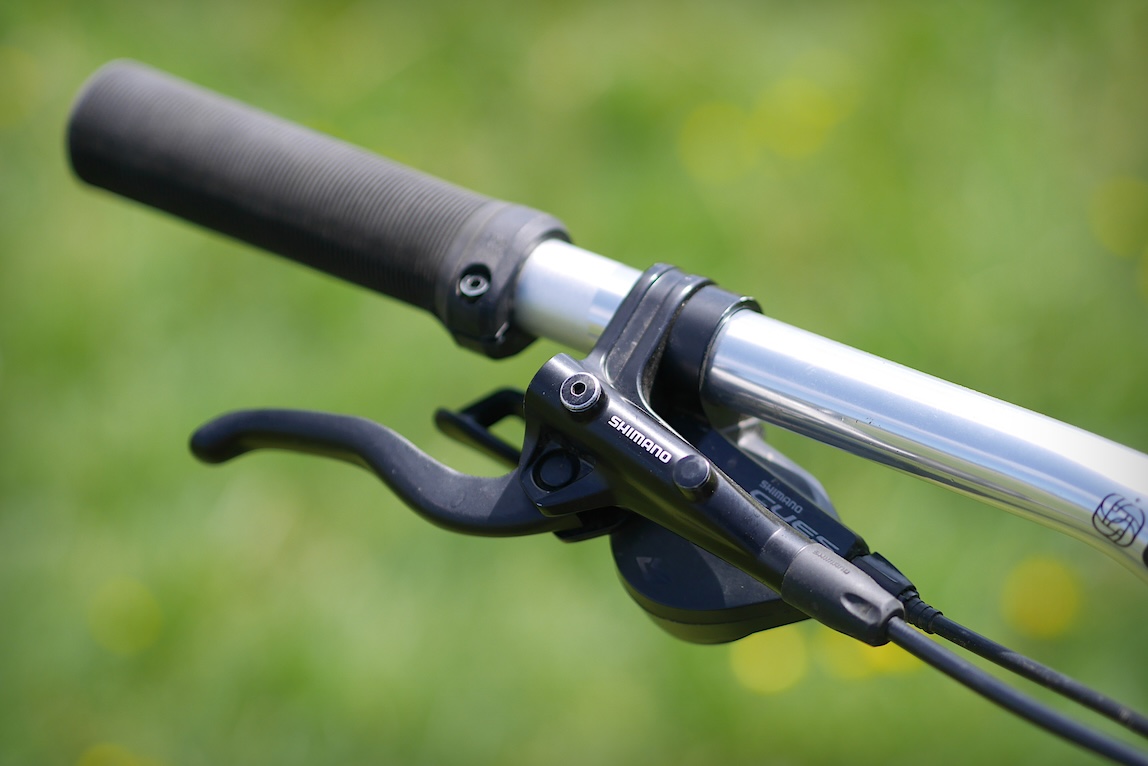
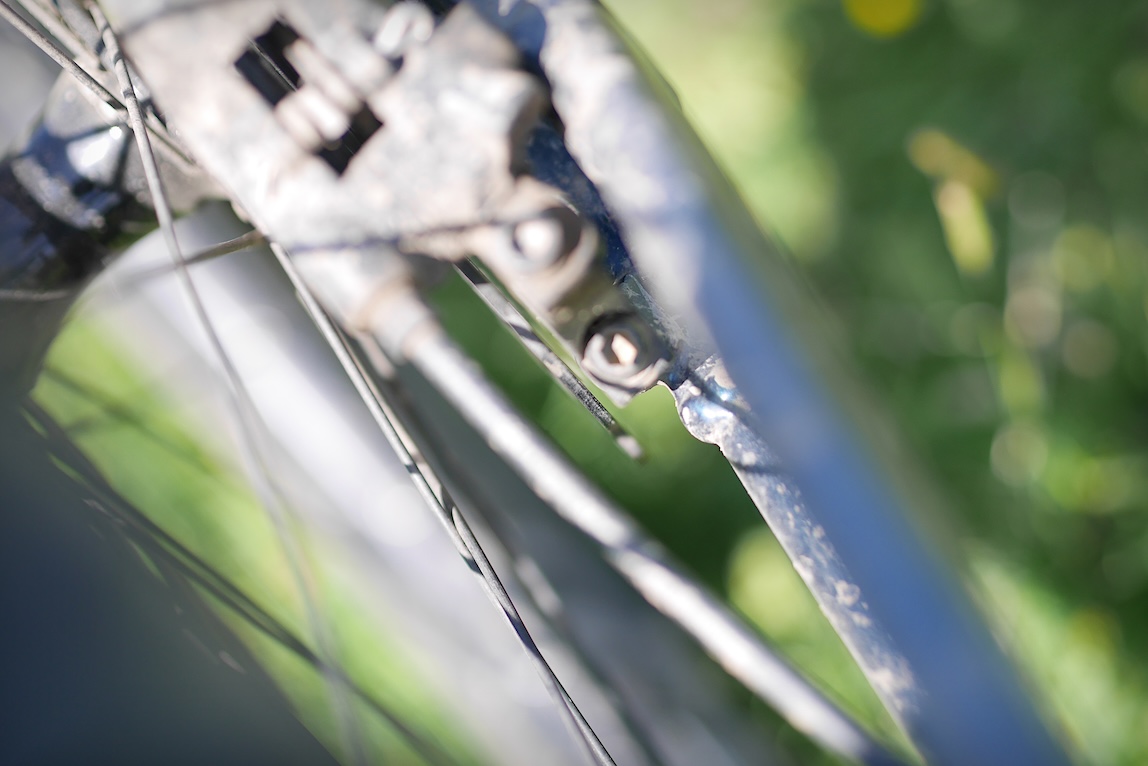
Whilst I’ve kept the MT401 brake levers and calipers, I have swapped in some larger (and slightly thicker) Formula rotors. Mainly to increase the braking power but also partly to reduce the amount of dead-throw that the MT401 levers had. I don’t think I’ll do anything else in terms of braking upgrade. This setup is really good now.
The wheels and tyres

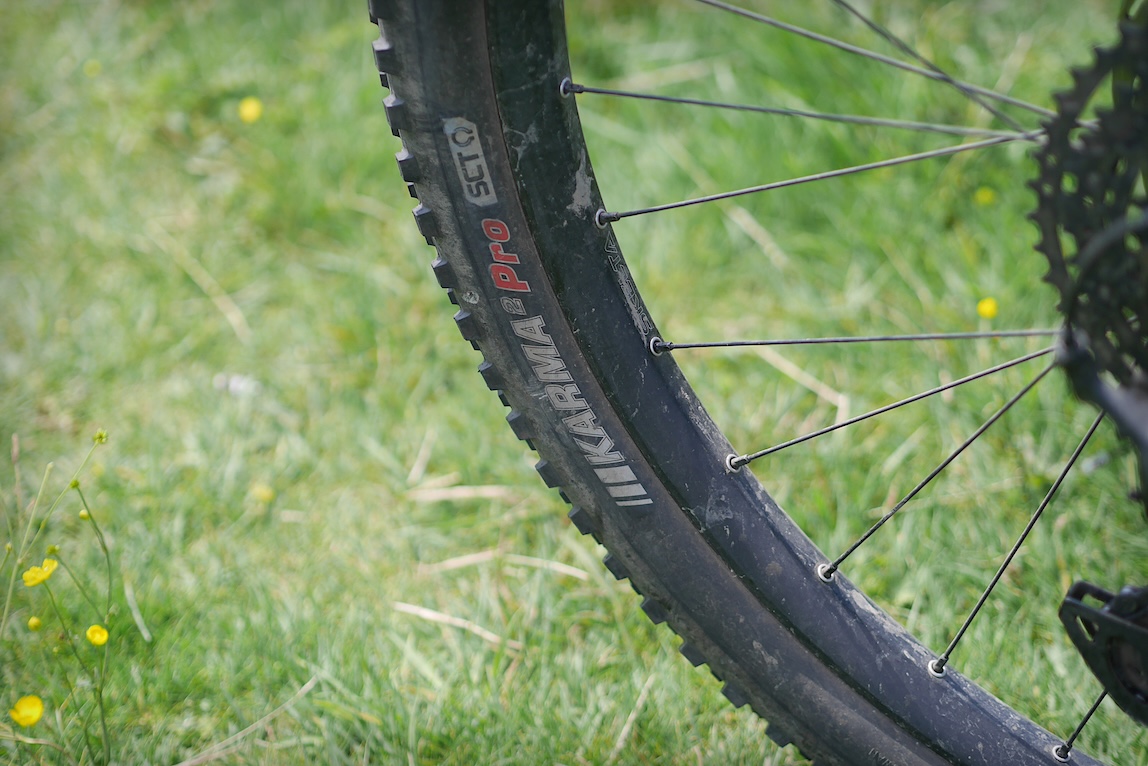
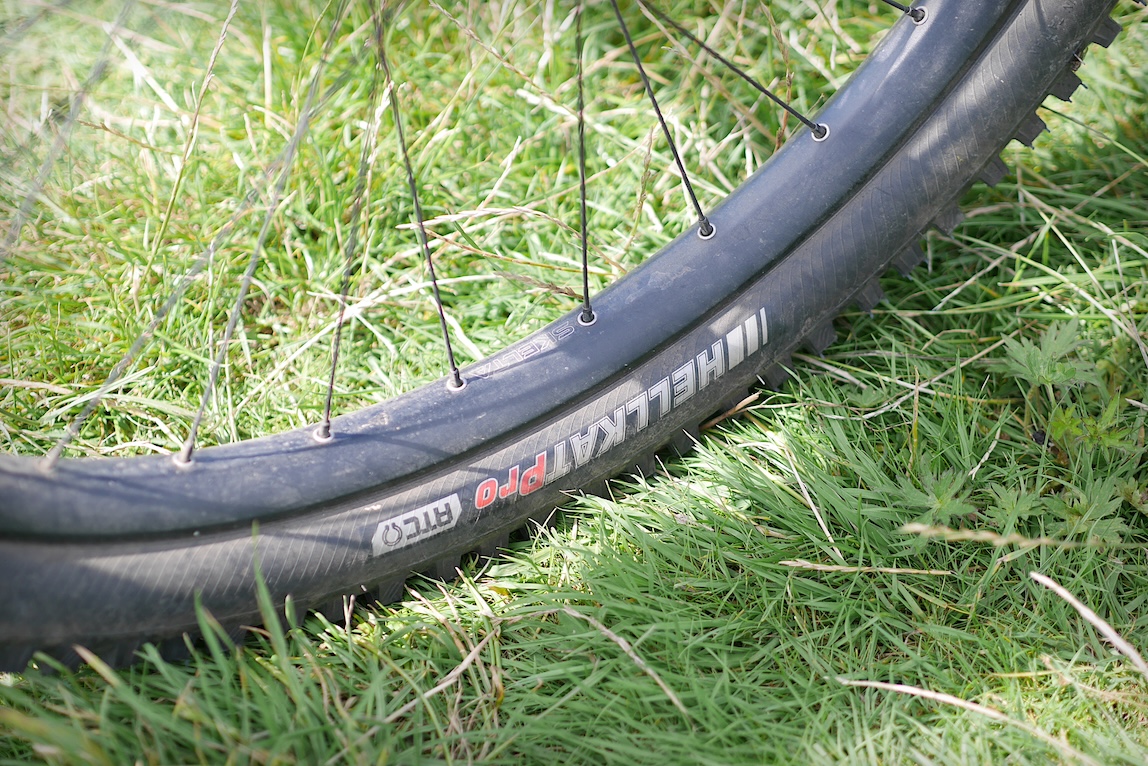
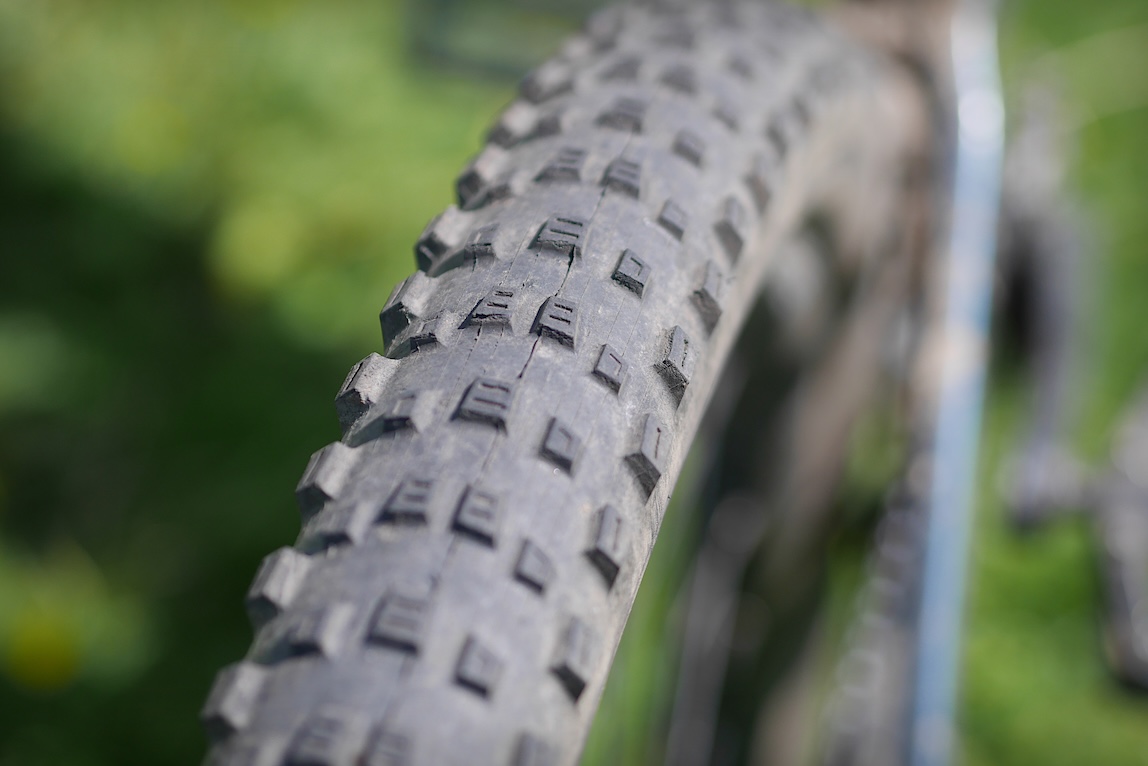
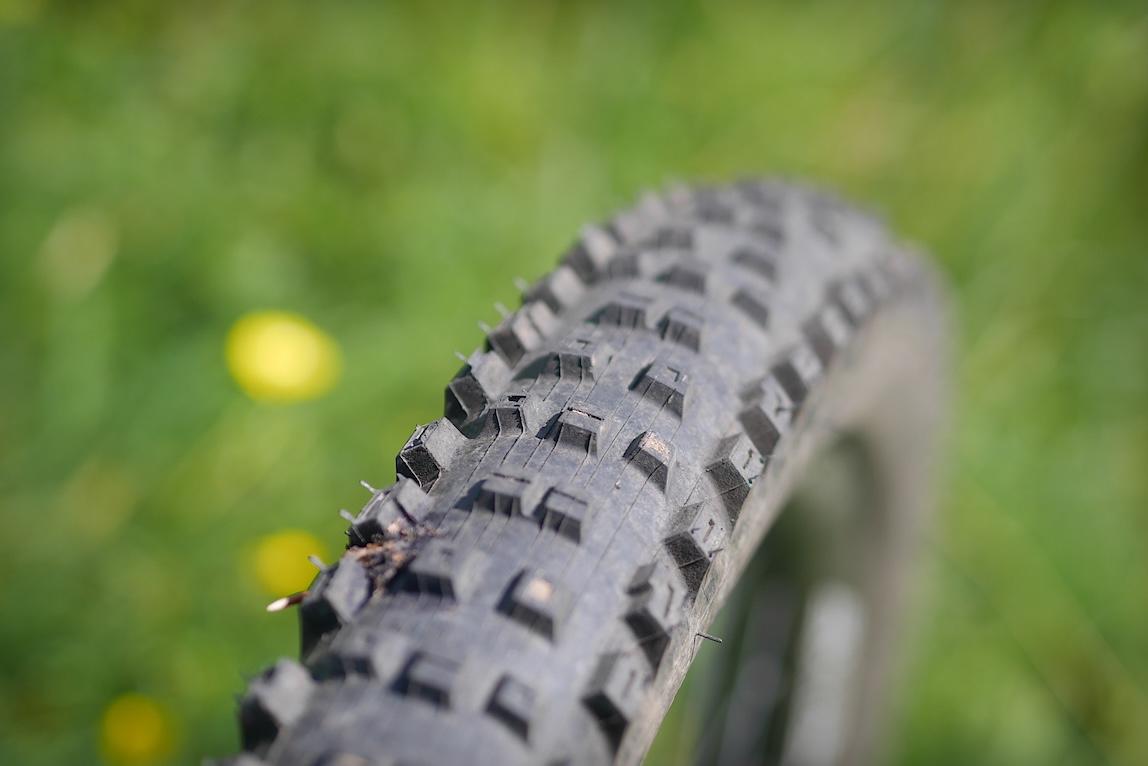
The wheels were earmarked early on as ripe for upgrading. The OEM chunky rims, no-frills slow-pickup Shimano TC500 hubs and who-knows-what (plain gauge?) spokes all added up to a relatively lumped and uninspiring experience. In their place have gone some Halo Skelta MT wheels which are about as expensive as I think is worth going with alloy rims (SRP £530.00). I just seem to eventually dent alloy wheels so am not keen on spendy alu rimmed wheels.
Tyres are both from Kenda: Hellkat Pro front, Karma Pro rear. The Hellkat Pro has been great so far. And the low profile Karma Pro has done wonders for keeping things rolling along swiftly without feeling undergunned. Both are setup tubeless with whatever valves and sealant were at hand. About 24psi in the front and 22psi in the rear, which is pretty firm for me but anything softer different feel any grippier, so I went with 24/22psi.
The suspension
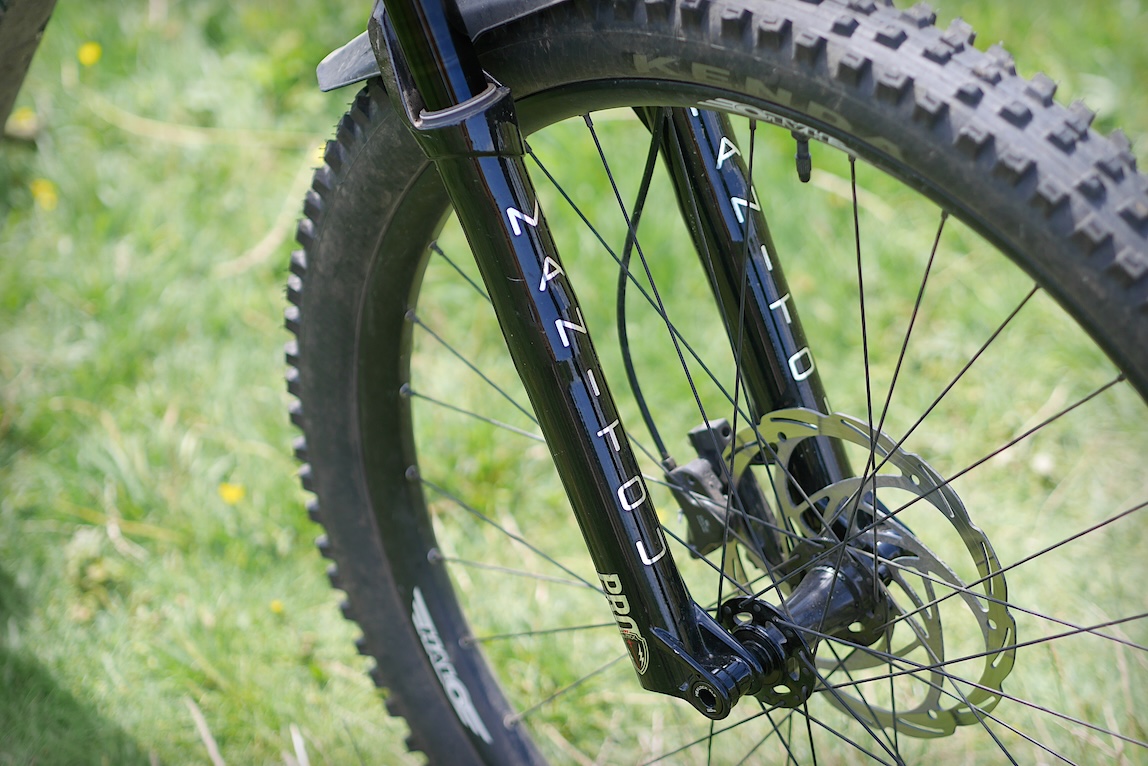
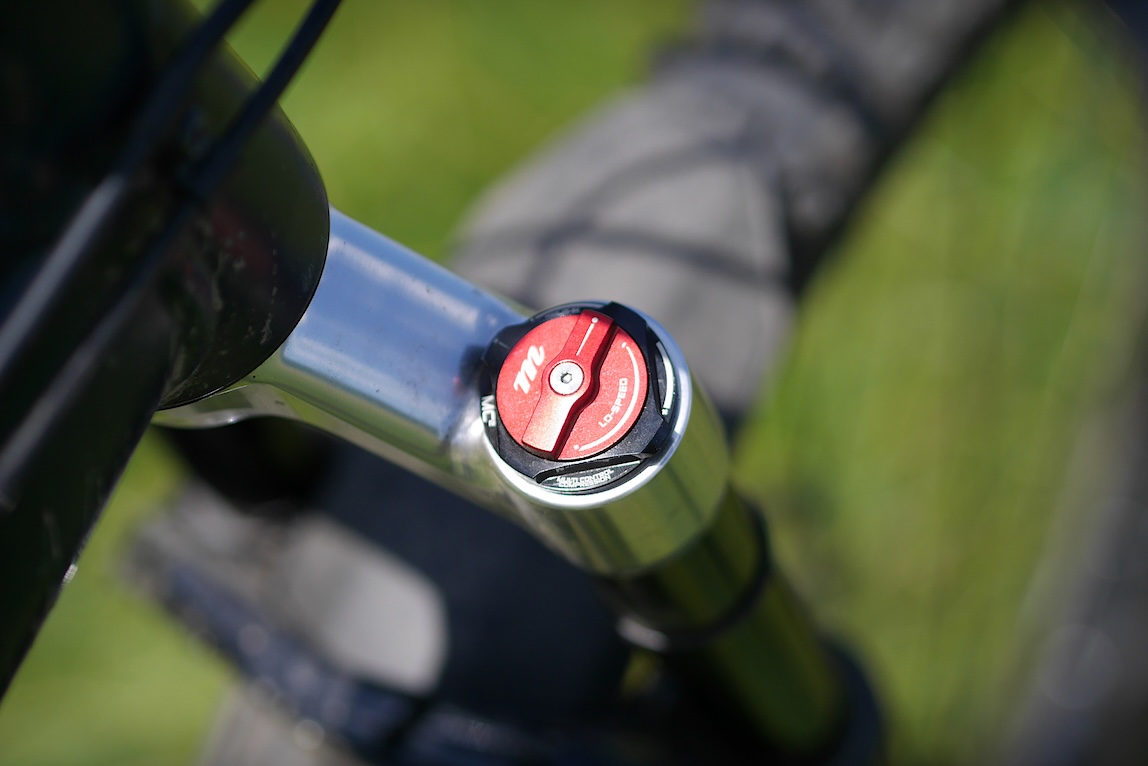
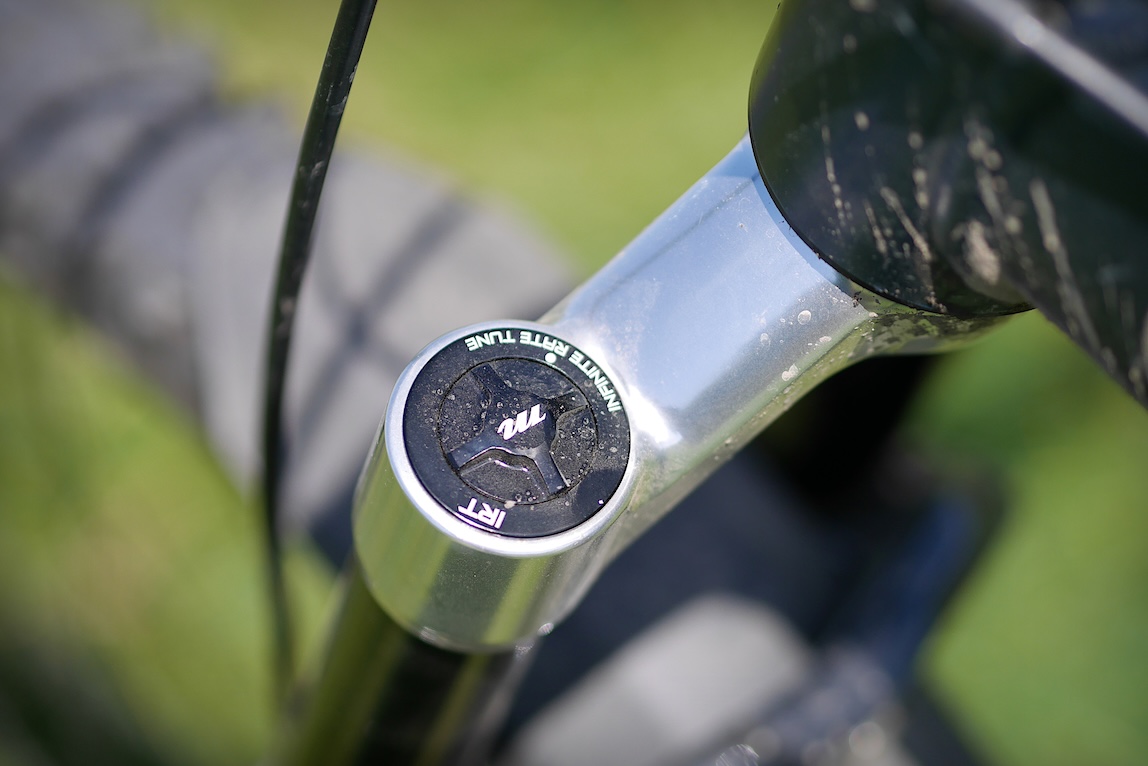
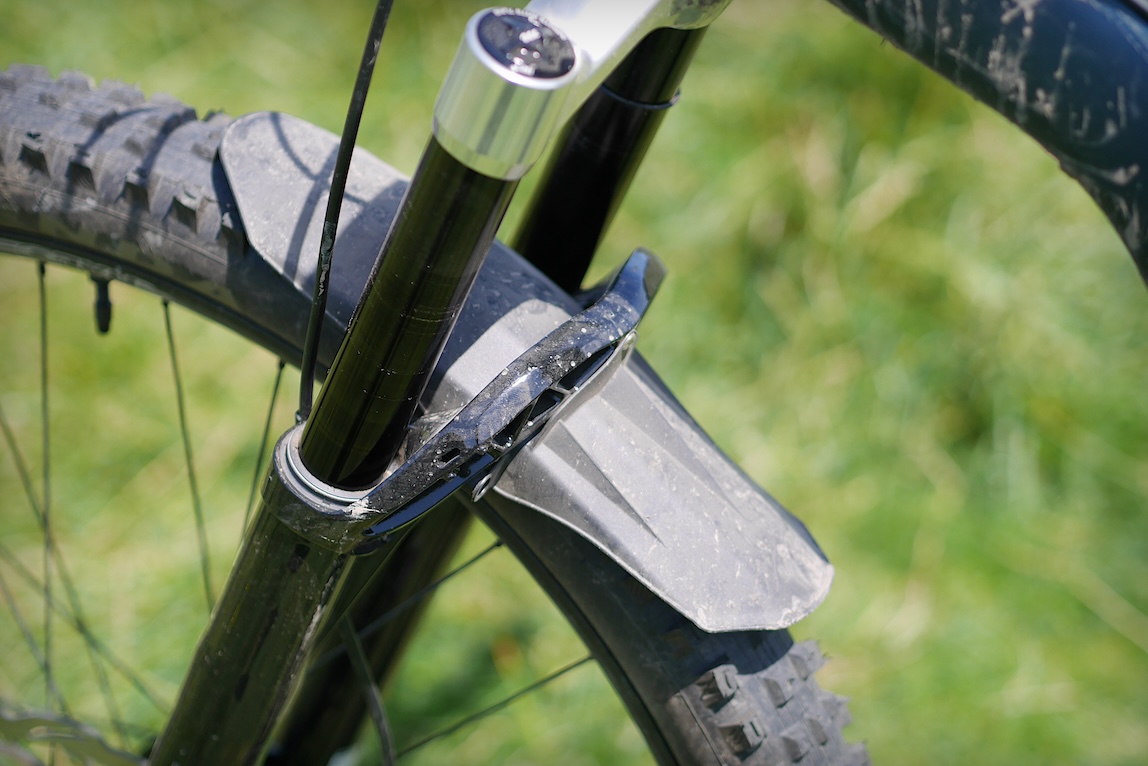
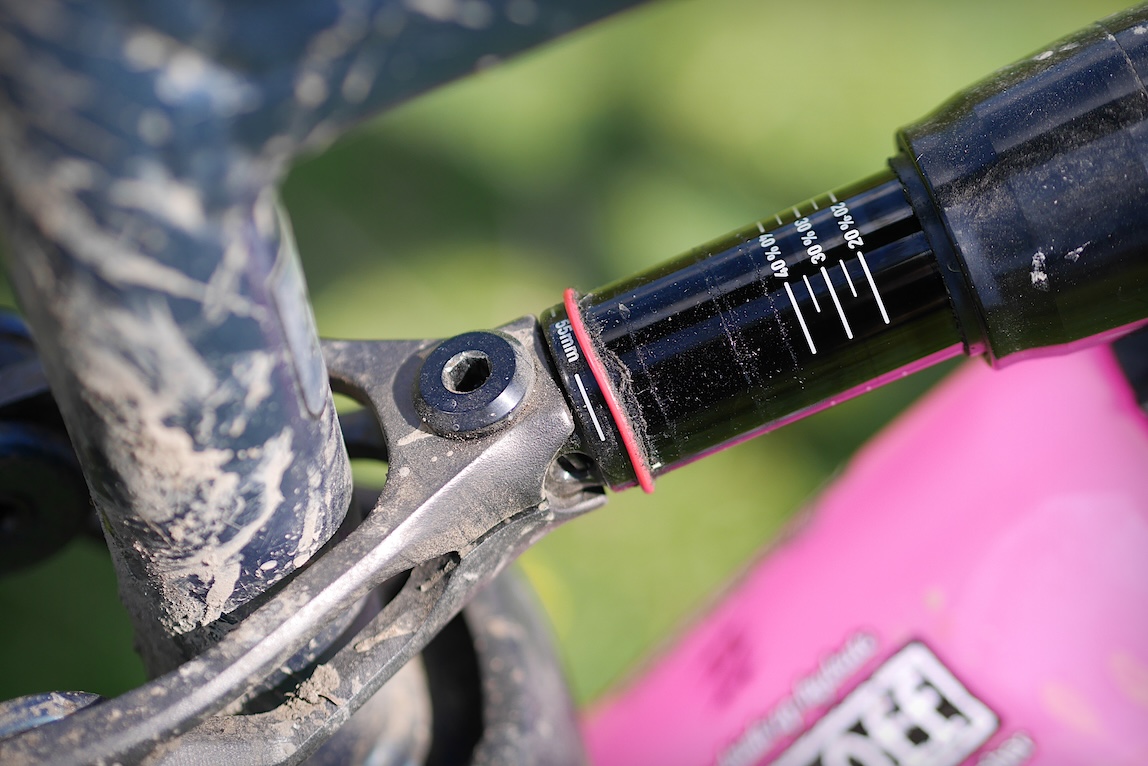
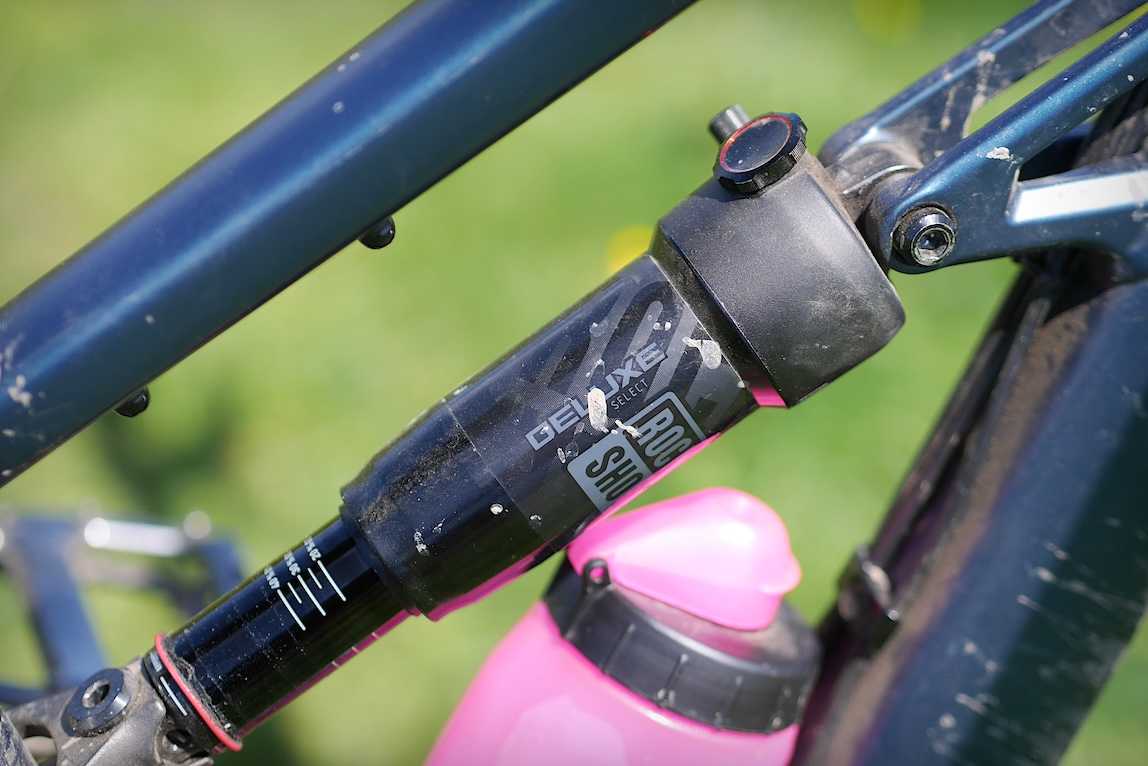
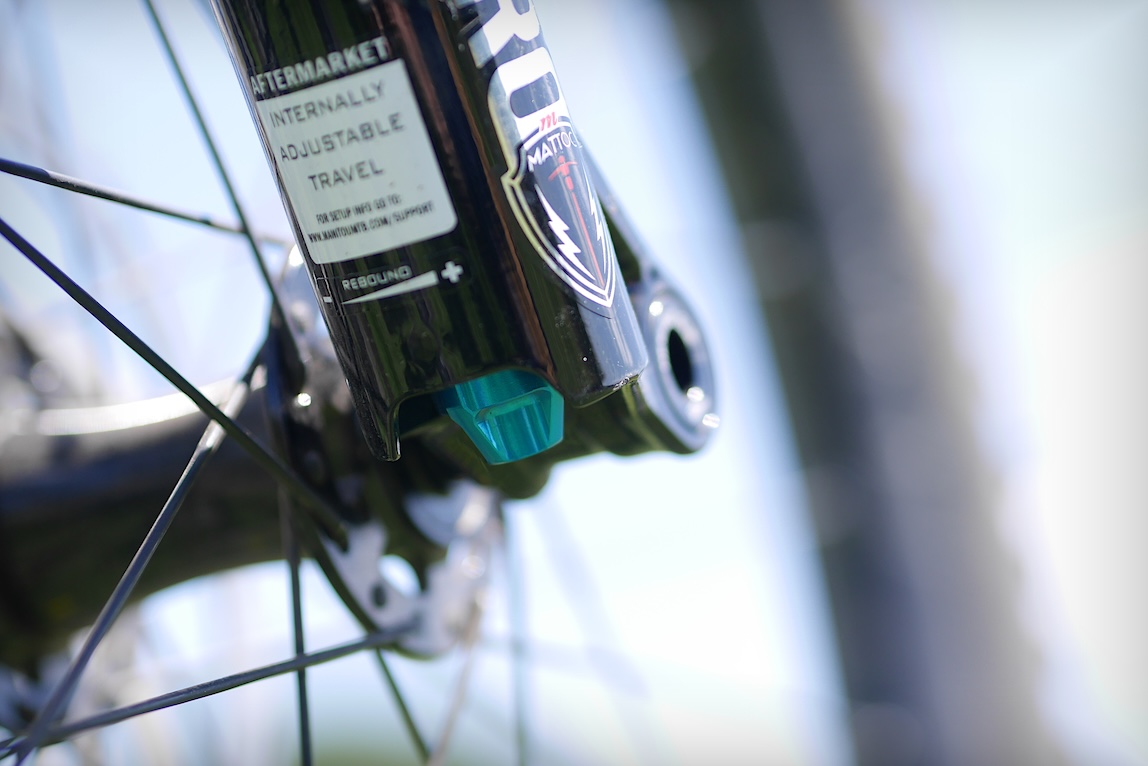
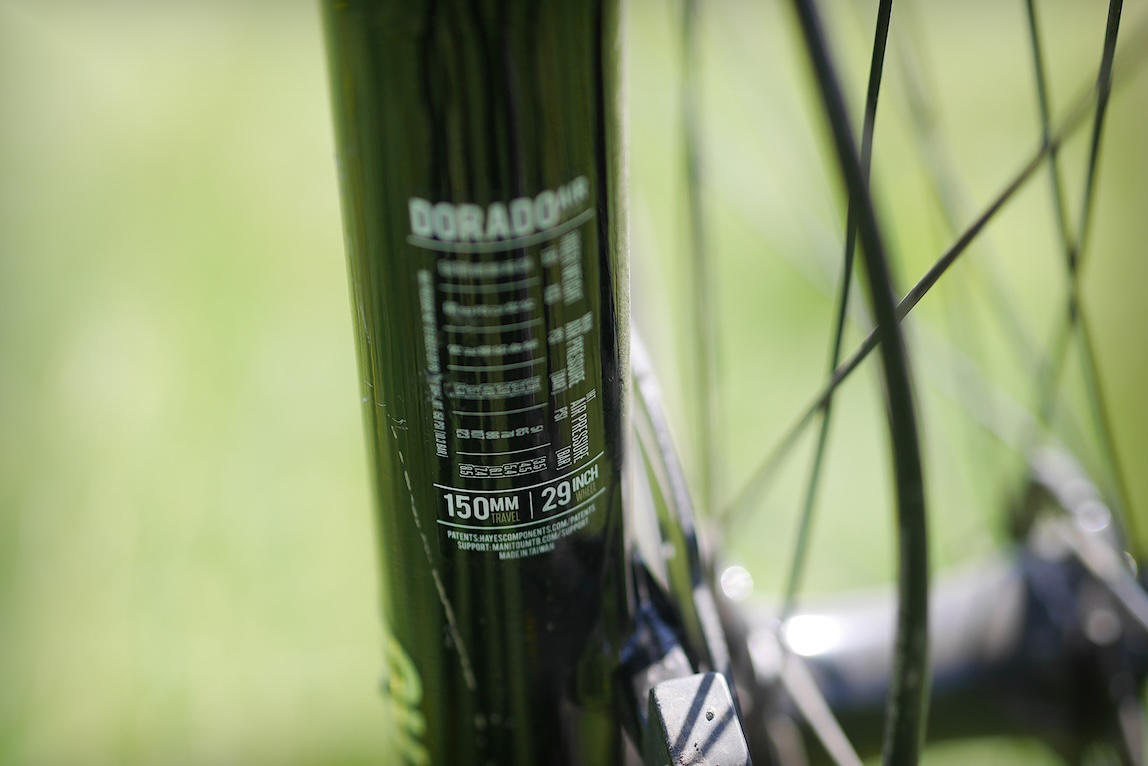
The other main item on the original build that was quickly marked for upgrading was the RockShox Recon suspension fork. As you can see, I’ve plugged in a Manitou Mattoc Pro into the headtube now. As well as being significantly more sophisticated in terms of air spring and damping than the Recon, it’s also a whopping 10mm longer travel. This does alter the geometry of the bike a little bit but I figured in a better way (slightly slacker head angle is nice and the raised BB and the seat angle is steep enough to warrant a smidge of slackening). So far, the Mattoc has been fantastic. It requires patient setup but it’s so worth it. Love me a bit of IRT. Full review in time.
The rear shock is on my To Do List. I did attempt to swap in a Fox Float X that I had around that was the same eye-to-eye and stroke but it didn’t fit into the yoke rocker mouth (due to a lack of cutaway notch on the non-driveside). Which is something worth knowing about if you’re a Bossnut owner. So I am intending to upgrade the RockShox Deluxe Select R with an aftermarket RockShox air can. But… I haven’t done so yet. Sorry.
The finishing kit
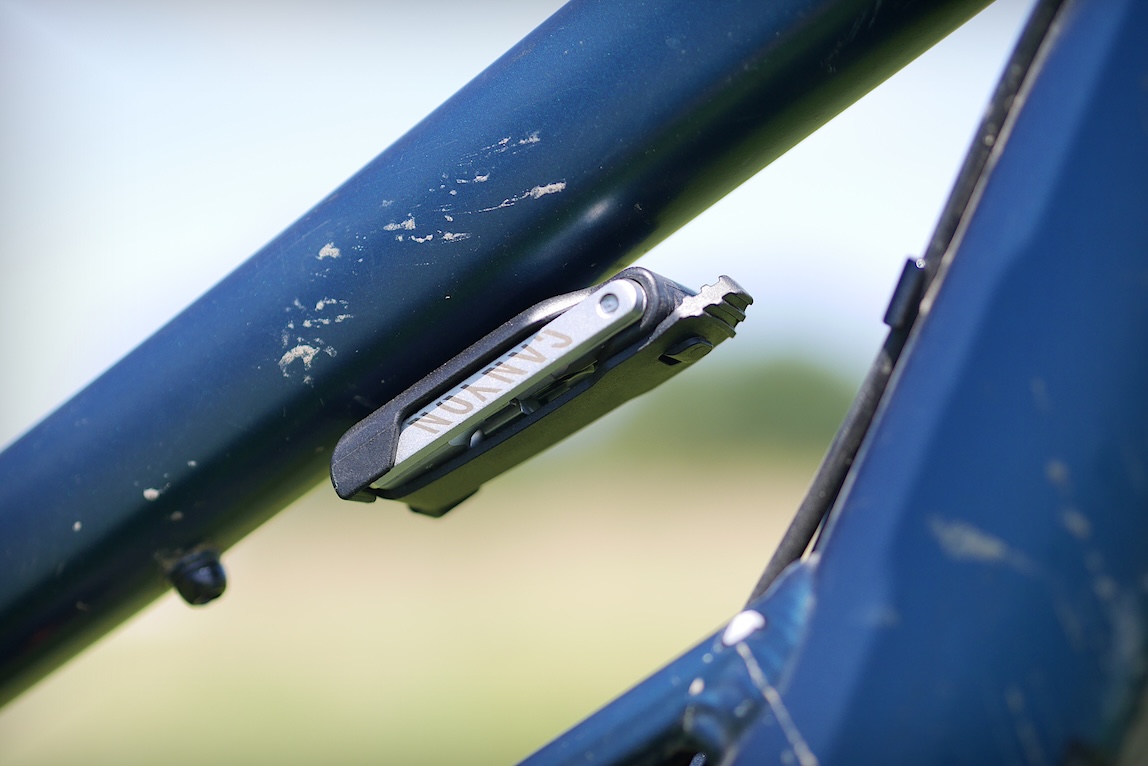
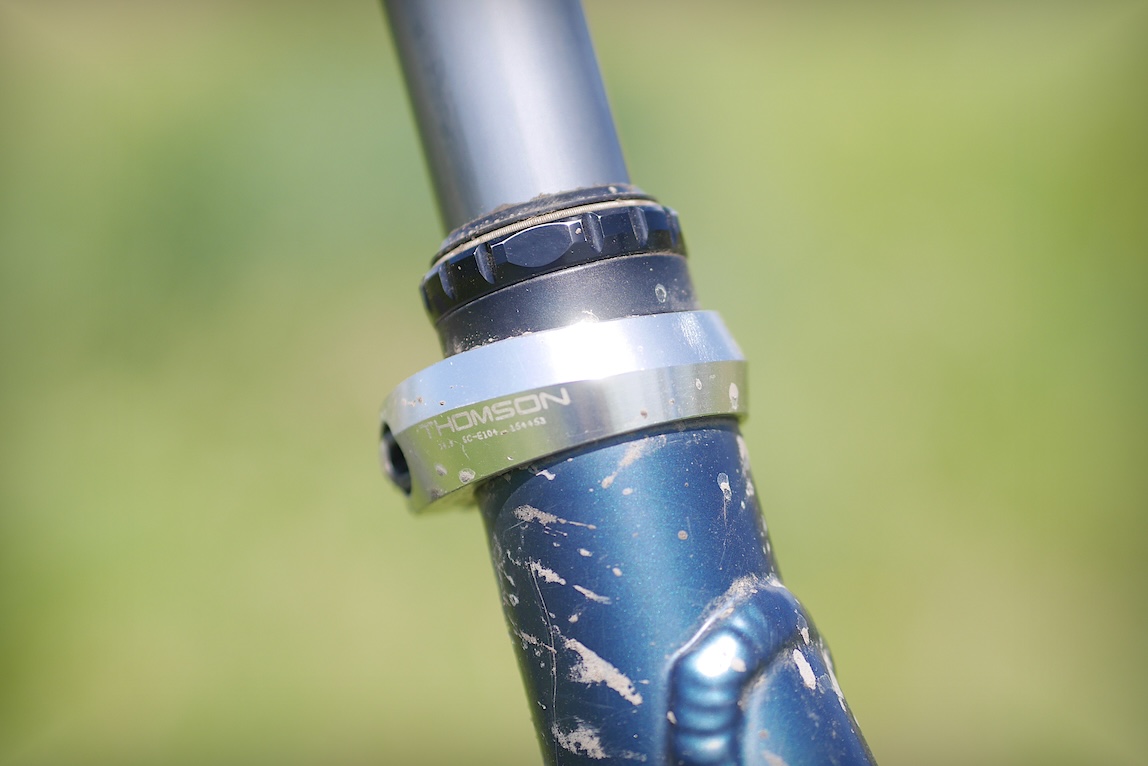
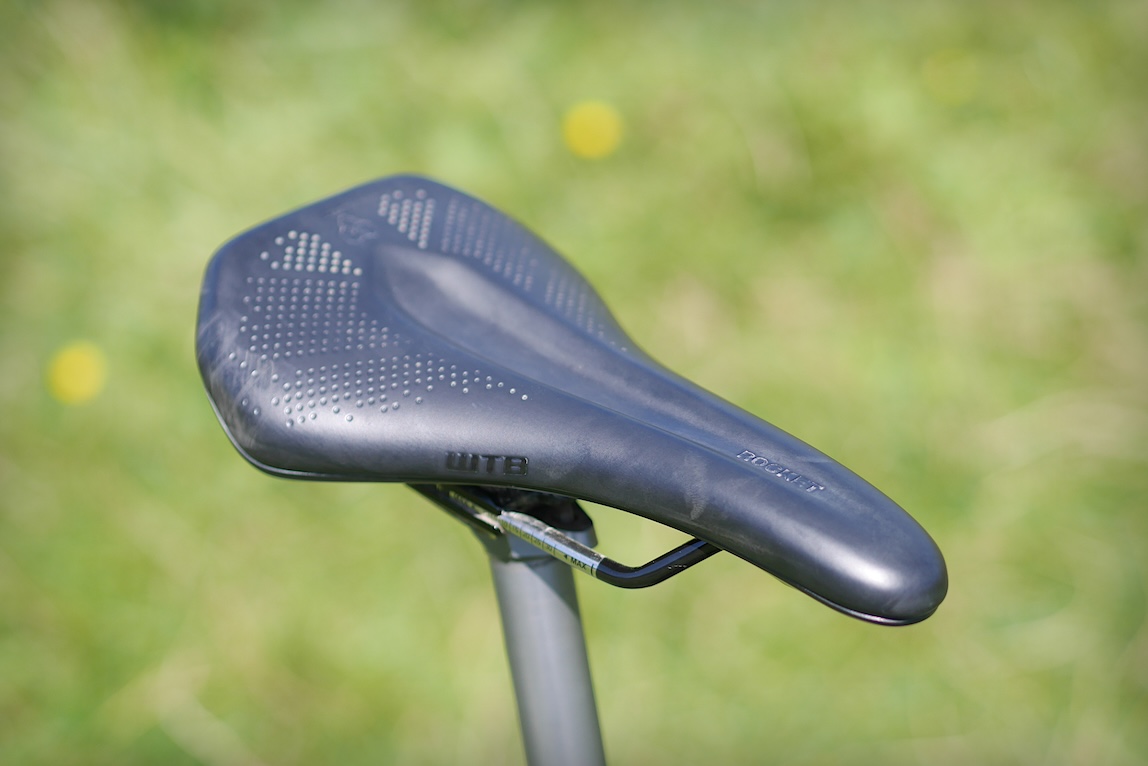
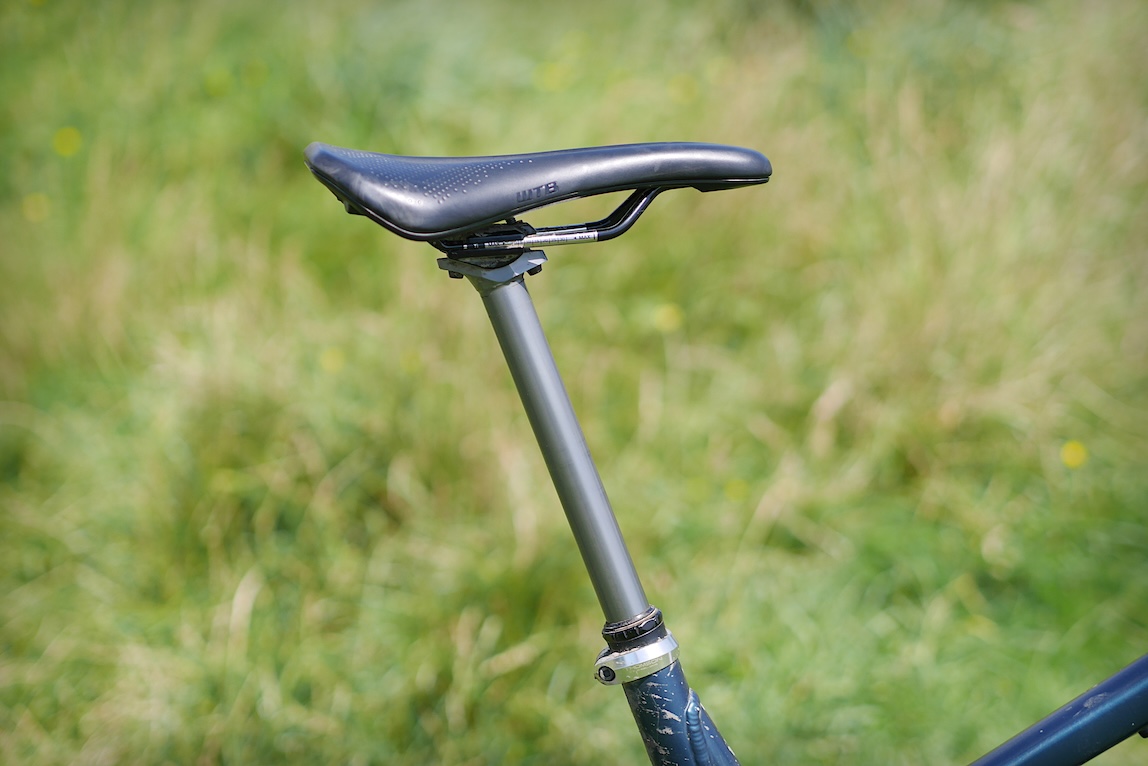
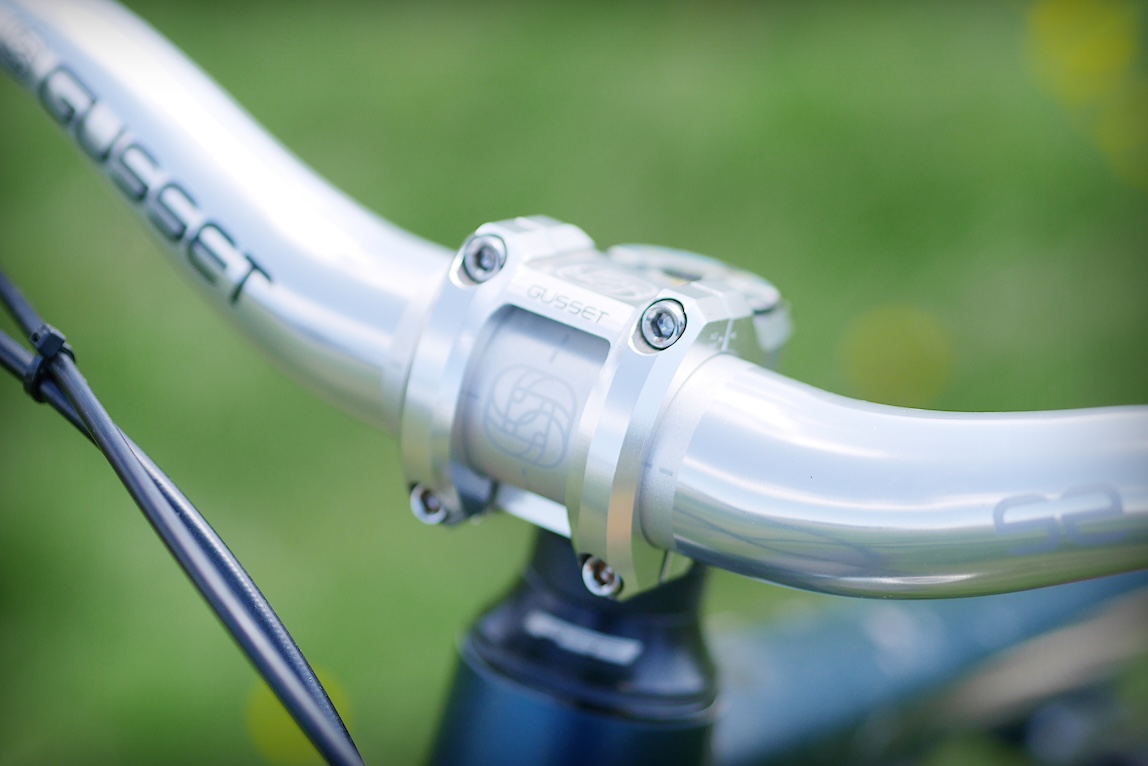
Longer dropper: a fully slammed 200mm Tharsis from PRO just about fits my length length. I am tempted to upgrade the crankset (to run a 28T chainring size that’s not possible with Shimano BCD) so I may also go down in crank length (to 165mm) which will give me a little bit more dropper post breathing space.
On top the dropper is now a new WTB Rocket saddle. Slammed fully forward, as is the case on pretty much any bike I ride. Holding the dropper in the frame is a classic Thomson seat collar. Because they are so nice.
What else? Short 32mm stem and higher rise 35mm bars, both from Gusset. In silver, which wasn’t actually my choice but happens to really work with this build. I’ve kept the original Calibre lock-on grips because they are very comfy and work well.
I’ve also robbed the under-top-tube mounted multi-tool from a passing Canyon Spectral. Super handy to have.
What’s next? Any questions?
The aforementioned rear shock air can surgery needs to be down ASAP. And sourcing a suitable 10-speed wider-range cassette (SunRace?). And then I’m not sure. It may well be complete. We shall see.
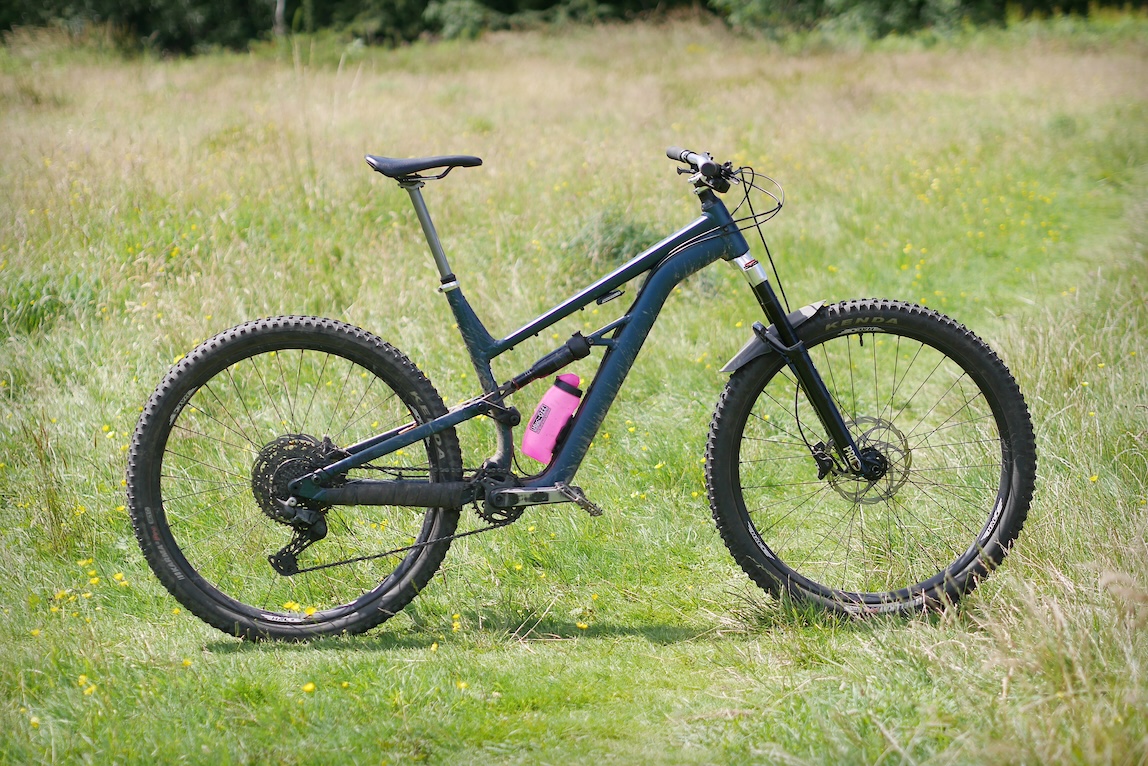





I guess the question is “why?"
What are you looking for it to do that it couldn’t do before and have you measured the ‘improvements’ in any way.
E.G have you tried the old wheels and new tyres, or new wheels and old tyres…
Does the shock make it faster ?
Can you brake harder?
We’ve all been there and done the same, but honestly, you’d have arguably bought a better bike for less money if spending £2000 on an Ebay Santa Cruz Hightower.
Those 400-series brakes are surprisingly good eh?
I think it’s a nice idea, making the kind of upgrades a new-ish rider might. Maybe share more about what it’s like to ride before/after though?
Dunno much about wider range 10sp cassettes BTW, you might want to drop to a 28t ring when you change to 165mm cranks. That should be fine with a 48t biggest cog.
I think the “why” can be answered by a lot of people on STW. It’s how we be buy our bikes, can’t justify/afford a high end item so buy the bike with the best frame that we can and then upgrade and improve when things wear out and when we can afford to. I would have bought a Bossnut if it had just been launched a touch earlier but I’m now in fatbike nirvana!
So where are you at weight wise compared to the original bike?
Good article
Also worth mentioning that GoOutdoors often have big chunks off in their end of season sales, this bike was £1000 just b4 Xmas!
Interesting bit missing (to me anyway) is the cost of the full bike + all the upgrades Vs. a comparable full bike. I havent been bike shopping for a while, but it always used to make sense to buy the better spec’d bike upfront. Primarily because the retail cost of upgrades (even in the glory days of CRC) were not competitive.
The counterargument to that is what makes a Hightower any better?
Tyres make an actual difference. I remember the first time I bough some Maxxis super-tacky way back when and it was a whole new world, now trail tyres are almost that good in the corners.
Suspension does up to a point, but beyond the mid-range it’s more ‘feel’ than performance. If you’re the same weight and riding style as the guy who specified it then arguably a £600 shock with all the adjusters at the mid point is no better than the £200 version that has all the same guts but no adjusters.
Brakes, sort of, but really the difference between Sub-Deore and Trickstuff is probably hundredths of a second per ride.
Wheels, no but it’ll feel nicer.
Groupset, no and even the feel is marginal, does a wibbly thumb lever impact your ride? A few grams off the cassette makes the bike feel better though, but again you’ll probably need something accurate than strava to see the difference.
The good news of the last ~5 years has been that ~£1500 bikes are no longer s***. I remember my Pitch (~2012) was great, but the components were awful, nothing worked after a few weeks. The wheels, brakes, headset, BB, gears, all failed. The Fox shock blew up (twice, and again for the next owner) and the fork wasn’t great. My new(ish) Vitus was cheaper accounting for inflation and apart from a few niggles (and a few known issues like the acros headset and WTB rims having a finite life) is brilliant. Apart form finishing kit I’ve not touched it.
Keep the comments coming. All useful. I’ll be doing another update to Project Bossnut once it’s ‘finished’ which will hopefully address most of the things mentioned so far. I’m currently 73kg or thereabouts depending on Asda’s craft ale deals.
If you’ve ever been part of the Bossnut Owners Facebook group (I have as my wife had a BBB during lockdown), you’d know that this is exactly what most of the people on there were doing. They’d bought the standard bike and then realised they enjoyed it and it rode way better than expected, they upgraded all the basic parts.
We never did that with her’s as it was just a stop gap while the kids were toddlers and wouldn’t ride much anyway, but were very surprised how fun and capable a bike it was (she’d come from the top spec Capra and I’d had a very tricked out Orange Alpine before then. Not everyone can afford a fancy bike, but many can afford a good, cheap bike and gradually upgrade it over time with nice things (and we all like nice things).
is a HighTower better? Maybe, is it more fun? Maybe not.
Really? How does that work beyond the first ride?
Yep, I’m sure a lot of us remember saving for a low or mid-range bike, maybe with some money from parents – then upgrading bits over time from our own money.
Rims always seem to be the place manufacturers look to save money which is crazy from a performance point of view. After the tyres they are probably the most important component in terms of handling.
In fact, rims are more important than tyres. At least with tyres you know you’re going to change them sooner or later.
Rear shock upgrade…?i’d stick a Manitou Mara inline on it.. best inline air shock ive ever used!
i like this article and concept. I am much more interested at looking at something ‘cheap’ thats had decent upgrades than an off the shelf bling machine.
As mentioned, would be good to see if there were measurable gains by the changes/upgrades. Be that weight or a particular strava segment or route (i know thats hard to quantify with so many variables)
It doesn’t on it’s own, unless your brakes are over-filled and working like a set closed system brakes form the 90’s.
But depending on the pad compound the coefficient of friction may decrease with temperature, so you squeeze it with less force, and thus less travel for the same level of braking. Likewise if the rotor has higher friction.
DIRT tried this by running bikes down a test track. My recollection is that DH bikes could do ~1:34 ish, the best enduro bikes of the day were 1:38, and the worst on test was 1:39. It seemed to get quietly dropped after a few issues.
Climbing exposed bigger differences but even then it seemed to just split bikes into those that could climb where the differences were seconds over ~8 minutes and those that couldn’t which again all seemed to group together 90seconds down. They could say subjective things like “this bike bobs more and as a result requires a smoother seated pedaling technique", but ultimately it would get to the top in the same time as the other bike that pedaled well out of the saddle because it was just a feeling and climbing speed was entirely down to the riders legs.
average rider here, usually riding very average bikes. Tyres and wheel make a huge difference. Wheel pickup especially. Agreed with all your points on drivetrain and then the wheel comment threw me a bit. Stick a normal stock unbranded novatech hub and unbranded rim on and replace with say a basic dt Swiss m1900 and you’ll notice a difference 100%